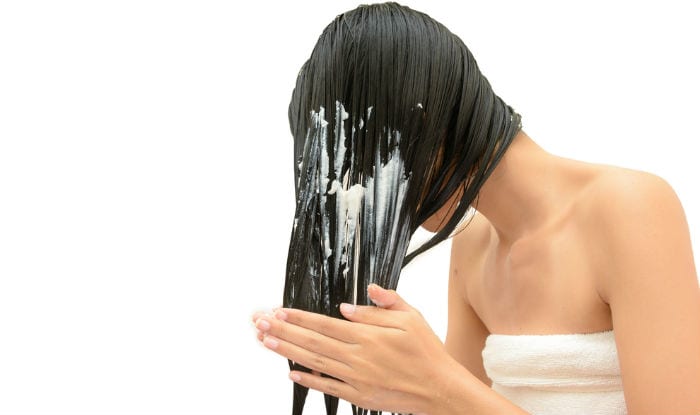The term “product accumulation” is relatively self-explanatory. It’s a thick, greasy film that coats your scalp, making it flaky and oily. Hair product residue builds up on the scalp over time, resulting in this film. Product accumulation is one of those unseen issues that can occur without our knowledge. Ironically, it’s caused by hair products that claim to improve the texture and appearance of your hair. As a result, many of us do not notice product buildup in the scalp until it has progressed to the point of causing adverse effects.
Symptoms Of Product Buildup in Hair
If you have built up, the following symptoms may be present:
- Dry or itchy scalp
- Flakes
- Difficulty styling hair
- Greasy, clumpy, or heavy tresses
- Unwanted casts on the hair (orange or green)
Common Causes of Product Buildup
There are a variety of reasons why accumulation can occur. It could be due to lifestyle choices, substances, or the use of various goods. A variety of conditions can produce buildup on the scalp, including:
Chlorine. This is a substance that can be found in swimming pools. While it is efficient at keeping harmful bacteria away, it can harm wildly colored hair.
Water with high mineral content. It has a high mineral content, which can cause deposits of minerals to build upon the hair shaft over time. Blonde hair takes on an orange tint as a result of this.
Washing is done infrequently. This is one habit that might lead to accumulation. Because a variety of style products (from hairspray to pomade and heat protectants) are used regularly, forgetting to wash periodically might result in layers upon layers of product.
Oil and dirt. As a result of poor washing, they might become entrenched in the hair shaft and on the scalp. Make sure you’re washing your hair correctly (working shampoo into the scalp twice and rinsing well) to reduce the chance of buildup.
Silicone-based shampoos Silicone is found in certain shampoos, which can be beneficial or harmful. Silicone-based cosmetics improve the appearance of damaged hair, but they can also add weight.
Why Does Shampoo Buildup on Scalp?
Shampoo, ironically, is a common cause of accumulation. Many shampoos, however, include hazardous ingredients that hurt your hair and skin. For this reason, you should use a clarifying shampoo to purify your scalp instead of your ordinary shampoo. However, a clarifying shampoo should not wholly replace your usual shampoo routine.
5 Natural treatments for Hair Product Buildup
Styling products are a terrific method to create volume and keep your style in place. However, over usage of these products can cause more harm than good. Following these steps to remove product buildup from your hair is especially crucial if you have thinning hair.
When it comes to getting rid of product buildup, do-it-yourself solutions are fantastic. They’re easy to create and can help protect you from dangerous chemicals found in store-bought goods.
1. Lemon Juice
lemon juice is ideal for eliminating product buildup because it is highly acidic. Lemon juice’s acidity helps regulate the hair’s PH levels and break down excess oils and sebum in the scalp.
Combine the juice of two lemons and one liter of water in a small bowl. Then shampoo and rinse your hair as usual. Divide your lemon juice into two parts and massage it into your scalp before conditioning; save the remainder in a spray bottle to use later.
2. Apple Cider Vinegar
Like lemon juice, apple cider vinegar eliminates product buildup because of its acidic characteristics. The apple cider vinegar dissolves the built-up residue in your scalp, making it simple to rinse away in the shower.This common home item is a natural approach to eliminate styling product residue from your hair. Spray the mixture to your hair or pour it on directly. You can leave it in for a minute or two before properly rinsing.
Mix one part vinegar to two parts water in a dish or spray bottle. After that, shampoo your hair as usual and thoroughly rinse it. Massage the vinegar mixture into your scalp and hair gently before conditioning. Allow two to three minutes before rinsing with cold water.
3. Baking Soda
Another multi-purpose, everyday item that can eliminate product buildup from your hair is baking soda.Use a spoonful of baking soda to regular shampoo, then wash and rinse usually.Sodium bicarbonate, a natural clarifying agent, is used to make it. It’s terrific for removing oils and sebum from the scalp because of this, but you should only apply it once a week.Add baking soda to three parts of water to make a thick paste. Blend with hands and gloves in a bowl until they form a paste.
4. Remove Hair Product Buildup with Honey and Cinnamon
Honey and cinnamon make a powerful combo for eliminating product buildup. Honey also contains various antioxidants and vitamins that help prevent dandruff and hair loss. Exfoliating with cinnamon promotes hair development by increasing circulation.
5. Remove Hair Product Buildup with Salt
Sea salt is a natural technique to dissolve the residue and filth in your scalp. It has a gritty texture, ideal for cleaning and scraping dead skin cells from the scalp.
6. Try micellar water
If you ask a French woman about her beauty secret, she’ll most likely respond micellar water. This popular cosmetic product has long been a favorite of the French, who use it to deep clean, tone, and nourish their skin.
Micellar water is now used in hair products as well. This multi-purpose product cleanses and moisturizes while eliminating grime and oil.
7. Use a clarifying shampoo
Regular shampoos are designed to eliminate debris and excess oil from your hair; however, clarifying or anti-residue shampoos are designed to remove buildup. Use these products once a month or once a week if you enjoy your style products to remove residue.
The Bottomline: use simple
Your scalp includes the same skin cells and sweat glands as the rest of your body, even though it is covered with hair. As a result, you should treat your scalp with the same care as your facial skin. You’d never leave an entire face of makeup unwashed.
Product buildup on your hair and scalp could be the cause of your tresses looking thin, lifeless, or dry. This residue can weigh down and dry out hair, making your strands more prone to breakage and giving you a thinning appearance.


